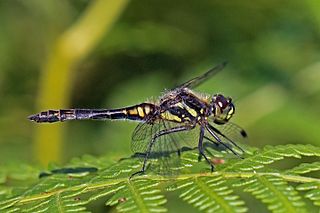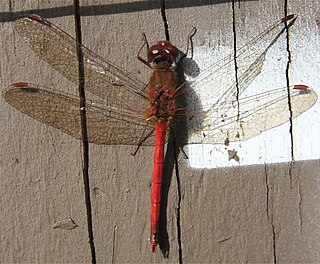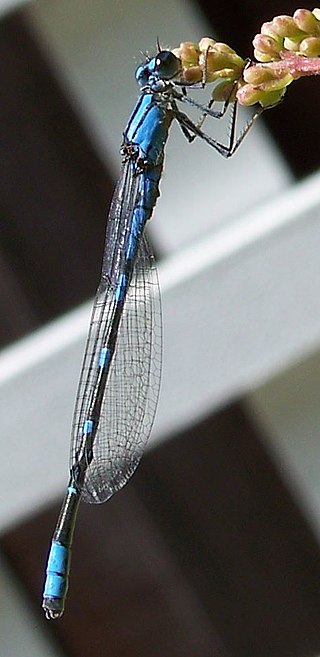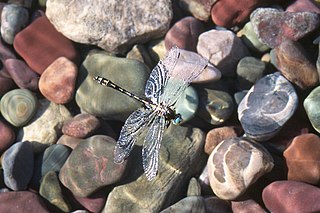
The red-veined darter or nomad is a dragonfly of the genus Sympetrum.

The common darter is a dragonfly of the family Libellulidae native to Eurasia. It is one of the most common dragonflies in Europe, occurring in a wide variety of water bodies, though with a preference for breeding in still water such as ponds and lakes. In the south of its range adults are on the wing all year round.

The flame skimmer or firecracker skimmer is a common dragonfly of the family Libellulidae, native to western North America.

The variegated meadowhawk is a dragonfly of the family Libellulidae, native to North America.

The Western Meadowhawk is a dragonfly of the family Libellulidae, native to western North America. In adult form, the Meadowhawk has a length of 1 1/4 to 1 5/8 inches. The key distinguishing feature is a cloudy, orange-brown band that covers the inner half of each wing. The band may appear darker towards the outside. Males have a yellowish thorax, marked with wavy black lines on each side, and a red to reddish brown abdomen, marked with black along the bottom edge of each side. Females are olive to golden brown and marked similarly.

Sympetrum pedemontanum or banded darter is a dragonfly belonging to the genus Sympetrum. It is characterized by its small stature, dark wing bands, and red or yellow body. It lives in areas with low vegetation and stagnant or weakly flowing bodies of water. Although debate exists regarding the taxa's relationship to others in its genus, it can most commonly be identified by its wing bands, bilobed prothorax, and possibly its genitalia.

Sympetrum is a genus of small to medium-sized skimmer dragonflies, known as darters in the UK and as meadowhawks in North America. The more than 50 species predominantly live in the temperate zone of the Northern Hemisphere; no Sympetrum species is native to Australia.

Sympetrum danae, the black darter or black meadowhawk is a dragonfly found in northern Europe, Asia, and North America. At about 30 mm (1.2 in) long, it is Britain's smallest resident dragonfly. It is a very active late summer insect typical of heathland and moorland bog pools.

Sympetrum vicinum, the yellow-legged meadowhawk or autumn meadowhawk, is a member of the Libellulidae family. It grows to 26–35 mm long.

The tule bluet is a species of damselfly in the family Coenagrionidae found in North America, from northern Mexico to southern Canada.

The band-winged meadowhawk is a dragonfly of the genus Sympetrum belonging to the family Libellulidae.

The marsh bluet is a damselfly species in the family Coenagrionidae.

The dot-tailed whiteface is a species of dragonfly in the family Libellulidae. It is also one of the most common and widespread in the genus Leucorrhinia.

The shadow darner is a species of dragonfly in the family Aeshnidae. It is found in almost all of Canada and most states in the United States.

The desert whitetail is a species of dragonfly in the family Libellulidae. P. subornata is often put into the genus Libellula.

The boreal bluet is a species of damselfly in the family Coenagrionidae.

Progomphus borealis is a species of dragonfly in the family Gomphidae. This dragonfly species is commonly known as the gray sanddragon.

Gomphurus externus, the plains clubtail, is a species of dragonfly in the family Gomphidae.

Phanogomphus graslinellus is a species of dragonfly in the family Gomphidae. This species is commonly known as the pronghorn clubtail.

The Hudsonian whiteface is a species of dragonfly in the family Libellulidae. Its common name comes from where it is found, Hudson Bay.




















